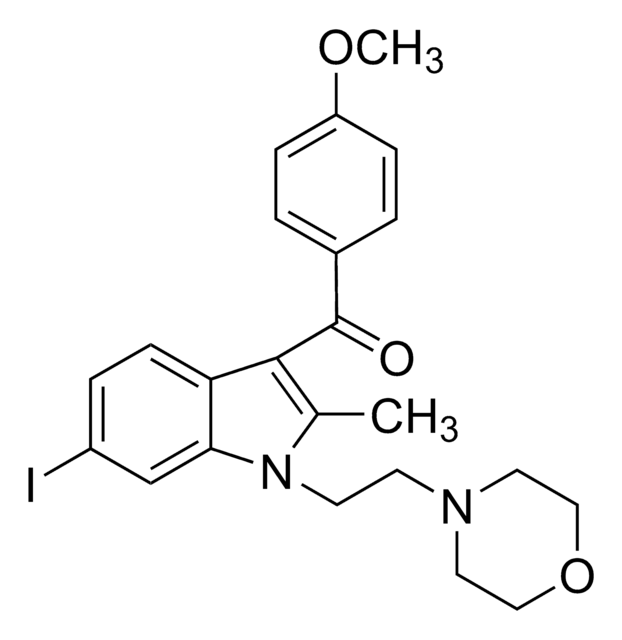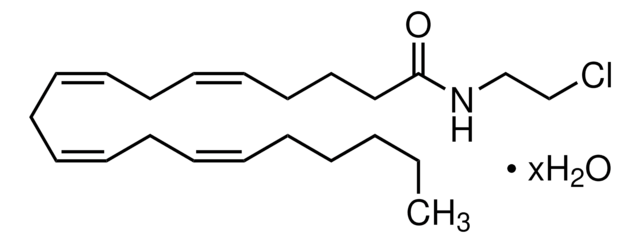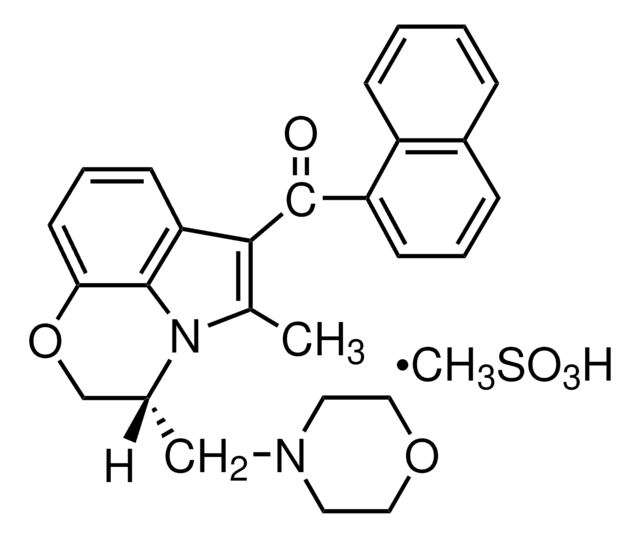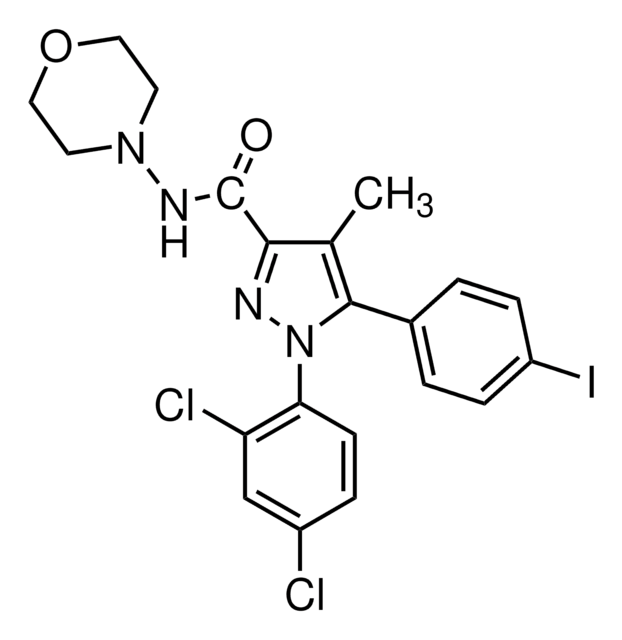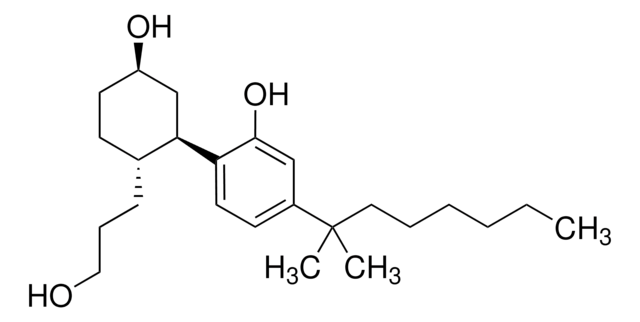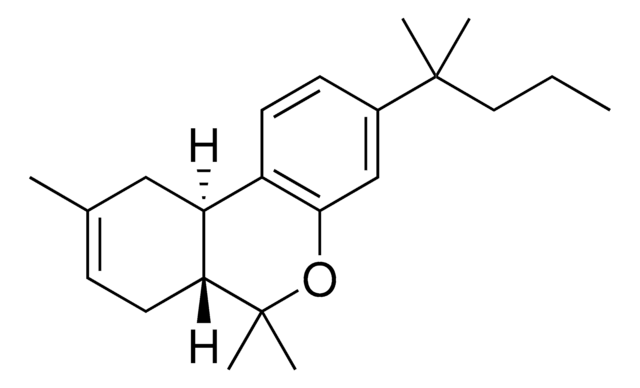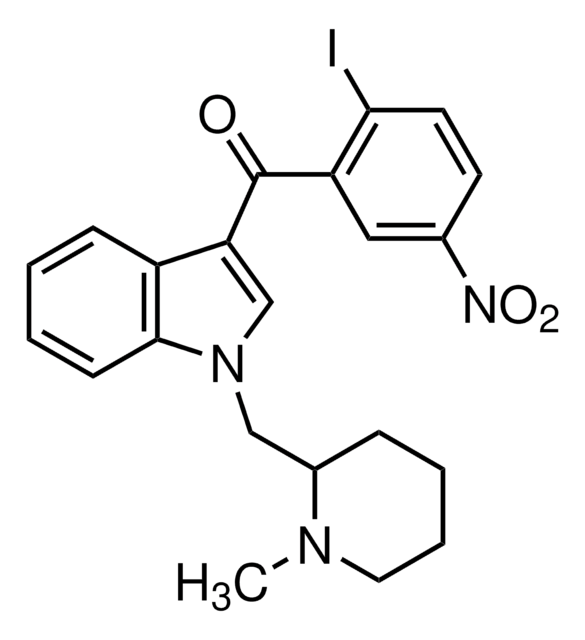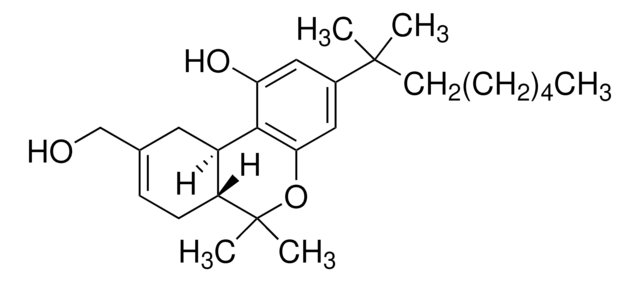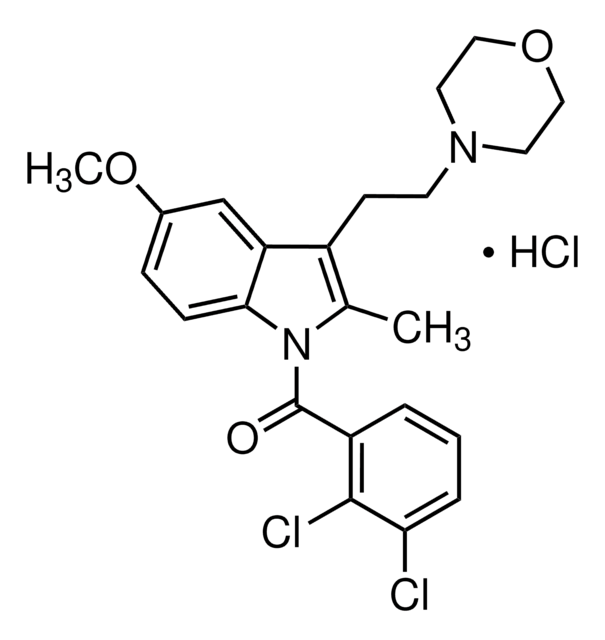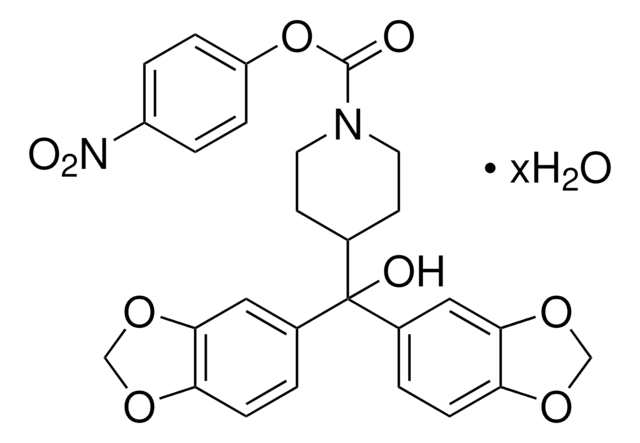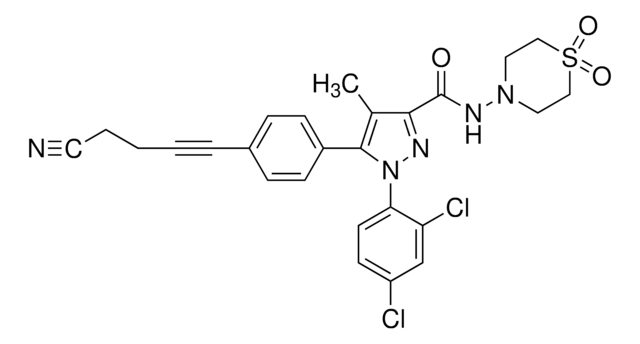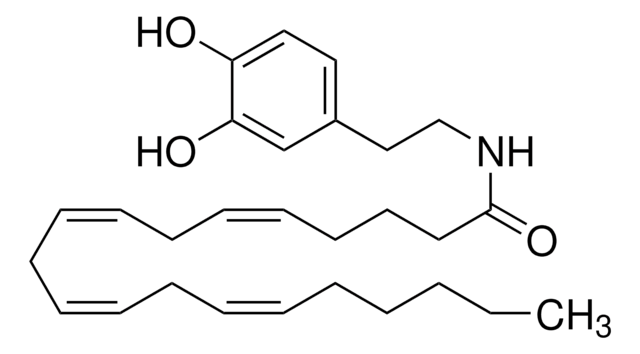A6226
AM251
>98% (HPLC), solid, cannabinoid receptor (CB1) antagonist
Synonym(s):
1-(2,4-Dichlorophenyl)-5-(4-iodophenyl)-4-methyl-N-1-piperidinyl-1H-pyrazole-3-carboxamide
About This Item
Recommended Products
Product Name
AM251, >98% (HPLC), solid
Quality Level
Assay
>98% (HPLC)
form
solid
color
white
solubility
DMSO: >10 mg/mL
H2O: insoluble
originator
Sanofi Aventis
SMILES string
Cc1c(nn(-c2ccc(Cl)cc2Cl)c1-c3ccc(I)cc3)C(=O)NN4CCCCC4
InChI
1S/C22H21Cl2IN4O/c1-14-20(22(30)27-28-11-3-2-4-12-28)26-29(19-10-7-16(23)13-18(19)24)21(14)15-5-8-17(25)9-6-15/h5-10,13H,2-4,11-12H2,1H3,(H,27,30)
InChI key
BUZAJRPLUGXRAB-UHFFFAOYSA-N
Gene Information
mouse ... Cnr1(12801) , Cnr2(12802)
rat ... Cnr1(25248)
Application
Biochem/physiol Actions
Features and Benefits
Other Notes
Hazard Statements
Precautionary Statements
Hazard Classifications
Aquatic Chronic 4
Storage Class Code
11 - Combustible Solids
WGK
WGK 3
Flash Point(F)
Not applicable
Flash Point(C)
Not applicable
Personal Protective Equipment
Choose from one of the most recent versions:
Already Own This Product?
Find documentation for the products that you have recently purchased in the Document Library.
Customers Also Viewed
Our team of scientists has experience in all areas of research including Life Science, Material Science, Chemical Synthesis, Chromatography, Analytical and many others.
Contact Technical Service